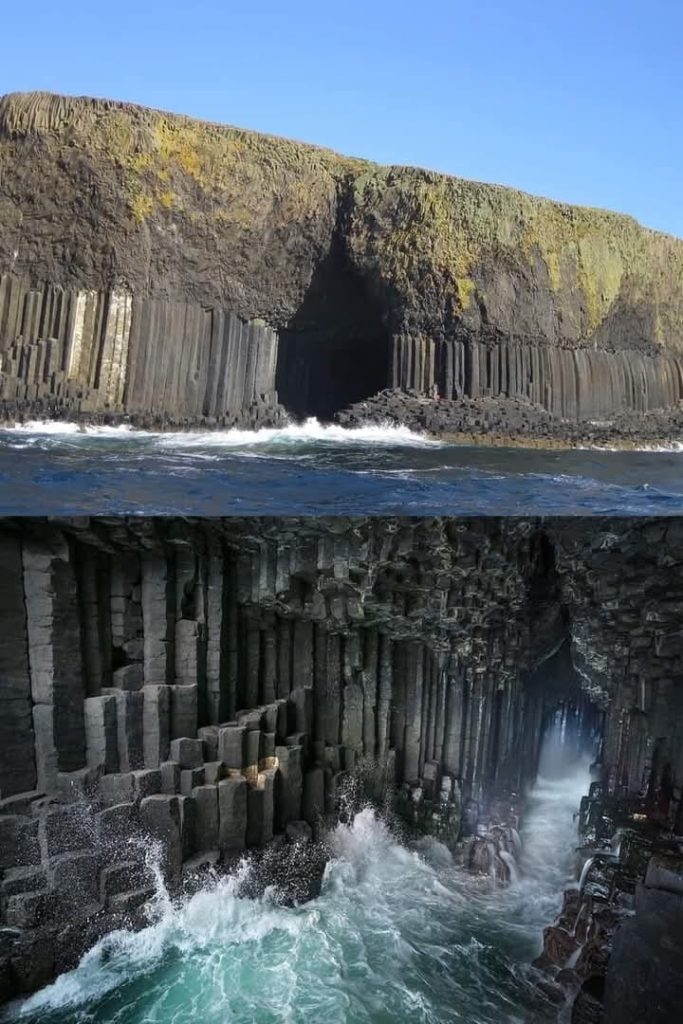Tucked away in the remote Inner Hebrides of Scotland lies a natural marvel unlike any other—Fingal’s Cave. Found on the uninhabited island of Staffa, this awe-inspiring cavern draws travelers from around the world with its unique geological structure and hauntingly beautiful acoustics. Revered as both a geological phenomenon and a cultural treasure, Fingal’s Cave stands as a testament to the incredible forces of nature and their power to inspire human imagination. Over the years, this site has fascinated scientists, musicians, poets, and mythmakers alike, making it an enduring symbol of natural grandeur and creative spark.

At first glance, the cave appears like a surreal sculpture crafted not by human hands, but by the Earth itself. Its most striking feature is its series of massive hexagonal basalt columns, standing upright and tightly packed like the pipes of a giant organ. These stone formations are not merely random—they were formed millions of years ago through volcanic activity. When lava cooled rapidly after an eruption, it fractured into these geometric shapes, creating one of the most visually stunning landscapes in all of Europe. Measuring about 72 meters (236 feet) in length and rising to around 20 meters (66 feet) in height, the interior of the cave feels like walking through a cathedral of stone, where every surface carries the echo of time itself.
What makes Fingal’s Cave even more extraordinary is the way it sounds. The cave’s arched ceiling and the uniform structure of the basalt columns create a natural acoustic chamber. Waves crash into the mouth of the cave and resonate throughout the cavern, producing sounds that closely mimic the deep tones of a cathedral organ. It’s as though the cave sings, not just to the ears but also to the soul. This phenomenon has captivated many over the centuries, and none more famously than the German composer Felix Mendelssohn. After visiting the cave in 1829, he was so moved by the experience that he composed the overture The Hebrides, also known as Fingal’s Cave. Through his music, Mendelssohn captured the mystery and majesty of the cave, allowing audiences everywhere to experience a piece of what he felt inside those echoing stone walls.
But the enchantment of Fingal’s Cave doesn’t end with its sights and sounds. The cavern is deeply rooted in Celtic mythology and has long been associated with the legendary Irish hero Fingal, also known as Fionn mac Cumhaill. According to tales woven into the oral traditions and later written down by 18th-century poet James Macpherson, Fingal was a warrior of extraordinary strength and bravery. In these myths, Fingal is said to have constructed a giant causeway between Scotland and Ireland—one that includes the famous Giant’s Causeway in Northern Ireland, which shares the same basalt column formation as Fingal’s Cave. This mythical connection gives the cave a sense of otherworldly significance, making it feel not just like a product of geology but also of folklore and legend.
Today, Fingal’s Cave remains a protected site within the Staffa Island nature reserve. It draws not only curious tourists but also professional geologists, artists, and adventurers seeking to connect with something greater than themselves. Visiting the cave often involves a boat trip followed by a careful walk along the slippery rocks that lead into the mouth of the cavern. Though it may take effort to reach, those who make the journey are rewarded with a profound experience that blends the raw power of nature with deep cultural resonance. It’s not just a place you visit; it’s a place you feel.
Over the decades, Fingal’s Cave has come to represent more than just a natural formation—it has become a symbol of Scotland’s rich and layered heritage. Its perfect blend of natural science and cultural mythology invites reflection on the relationship between humanity and the environment. Here, the Earth’s ancient past meets our modern sense of wonder. And in that convergence, visitors find meaning, beauty, and a lasting sense of awe.
The cave’s legacy continues to grow. It has been referenced in literature, paintings, and music. Writers like Sir Walter Scott described it as “one of the most extraordinary places I ever beheld.” Artists have tried to capture its haunting interior on canvas, and modern-day travelers frequently share their own impressions through photography and video, spreading the cave’s legend far beyond the Scottish coast. Social media and digital platforms have introduced Fingal’s Cave to new generations, who marvel at how such a perfectly symmetrical and naturally musical structure could be carved entirely by nature.
Even scientists remain intrigued by the cave’s formation. Its striking similarity to the Giant’s Causeway in Northern Ireland continues to fuel research into the volcanic processes that shaped this part of the world. Studying these formations not only helps scientists understand the region’s geologic past but also offers insights into the broader forces that have shaped our planet over millennia.
Yet for all the science and mythology, the most powerful aspect of Fingal’s Cave might simply be its ability to inspire. It’s a reminder that nature can create spaces more magnificent than anything built by man. In a world often dominated by technology and constant noise, the cave offers a rare kind of stillness—one filled only by the echoes of waves and the whispers of ancient tales. It urges us to pause, to listen, and to imagine.
Fingal’s Cave stands as a rare intersection where geology, music, and myth converge. It invites each visitor to discover not just a place, but a story—a story millions of years in the making and yet still alive in every echoing wave and every awe-struck gaze. As long as people seek wonder, Fingal’s Cave will endure, continuing to cast its spell on those who step into its shadowy embrace and look upward at its towering stone columns, listening to the eternal rhythm of the sea.





